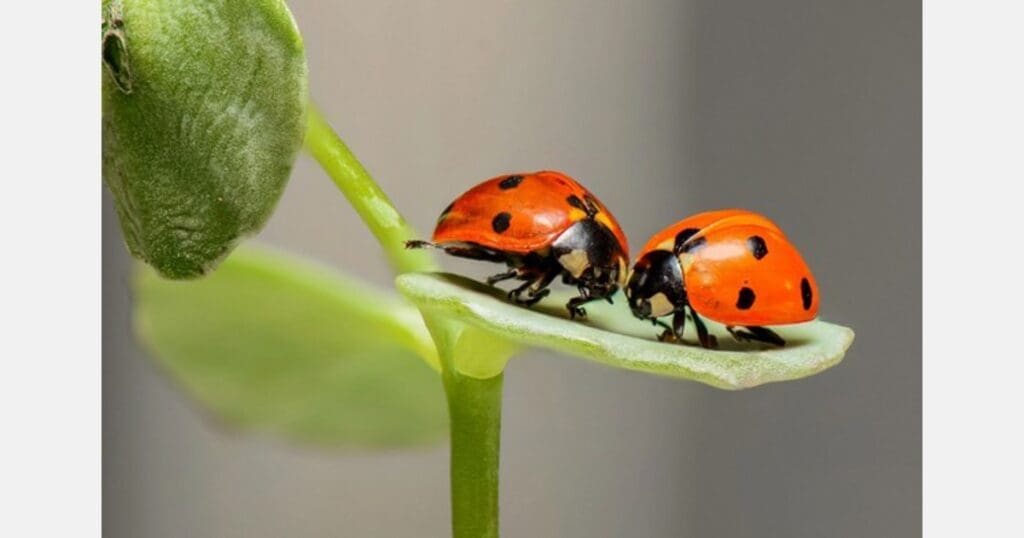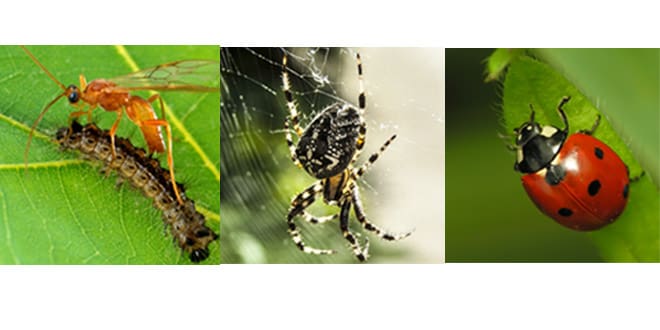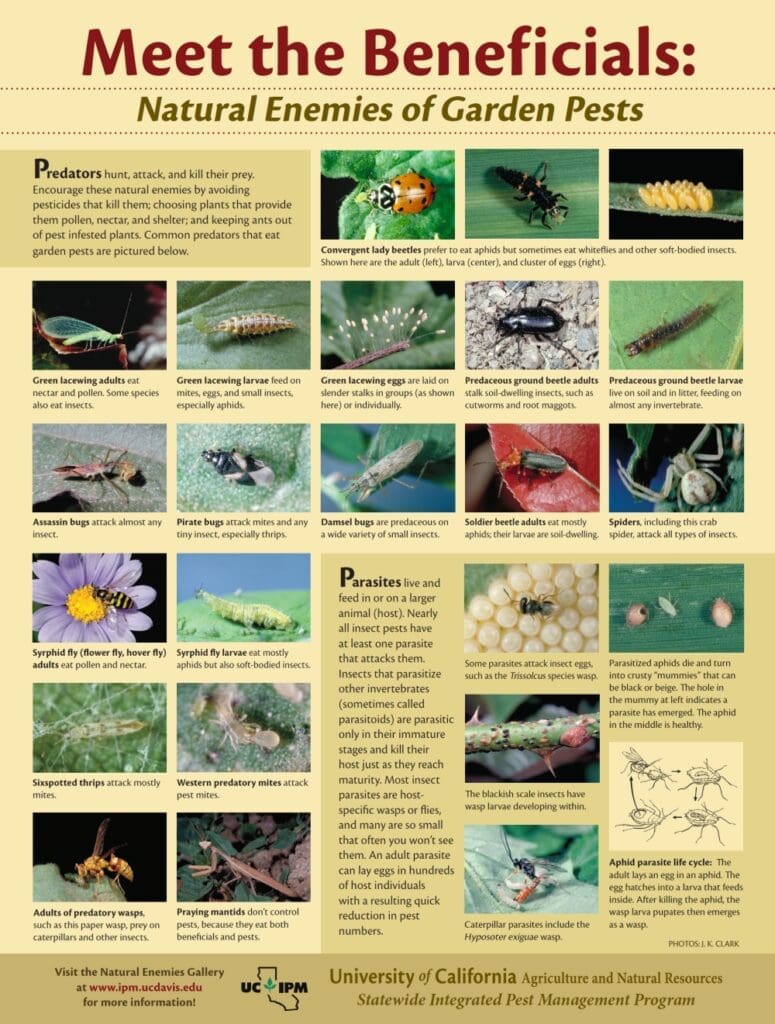In the world of pest management, beneficial insects are the unsung heroes. These remarkable creatures play a vital role in controlling pests naturally, without the need for harmful chemicals or pesticides. By preying on harmful insects or parasitizing them, these beneficial insects help maintain a balanced ecosystem and reduce the reliance on chemical interventions. From ladybugs devouring aphids to parasitic wasps combating destructive caterpillars, their contributions are invaluable. This article explores the fascinating world of beneficial insects and their significant role in sustainable pest control.

1. Introduction
Welcome to our comprehensive guide on the role of beneficial insects in pest management! Insects are often seen as pests themselves, wreaking havoc on gardens and crops. However, not all insects are harmful. In fact, many insects play a crucial role in natural pest control, helping to keep pest populations in check without the need for chemical interventions.
In this article, we will explore what beneficial insects are, why they are important, and how they contribute to pest management. We will also discuss examples of beneficial insects, tips for attracting them to your garden, and the challenges and limitations of using beneficial insects as biological control agents. So let’s dive in and discover how these tiny allies can make a big impact in your battle against pests!
2. What are Beneficial Insects?
2.1 Definition
Beneficial insects are a group of insects that provide valuable services to humans, particularly in the realm of pest management. Unlike harmful insects, beneficial insects help control pest populations naturally without causing harm to crops, gardens, or the environment. These insects can either prey on or parasitize pests, ultimately reducing their numbers and minimizing the need for chemical pesticides.
2.2 Importance
The importance of beneficial insects cannot be overstated. Through their natural predation or parasitism of pests, they help maintain the delicate balance of ecosystems. By keeping pest populations in check, they reduce crop damage and increase agricultural productivity. Additionally, their presence is a key indicator of a healthy and biodiverse ecosystem, as they contribute to the overall functioning and resilience of ecosystems.

3. Beneficial Insects in Natural Pest Control
3.1 Predatory Insects
Predatory insects are beneficial insects that feed on other insects, including pests. They are often categorized based on their feeding habits. For example, some predatory insects are generalists and will consume a wide range of pests, while others are specialists and target specific pests. Common examples of predatory insects include ladybugs, praying mantises, and lacewings.
3.2 Parasitoid Insects
Parasitoid insects are another group of beneficial insects that play a crucial role in natural pest control. Unlike predators, parasitoids lay their eggs on or inside the bodies of other insects, eventually killing their hosts. They rely on the host insects for nourishment and development. Once the host is killed, the parasitoid emerges as an adult. Examples of parasitoid insects include certain species of wasps and flies.
4. How Beneficial Insects Help in Pest Management
4.1 Biological Control
Biological control refers to the use of living organisms to control pests. Beneficial insects, such as predatory and parasitoid insects, are natural enemies of pests. They can significantly reduce pest populations by feeding on pests or by parasitizing them. This natural form of pest control can be highly effective and sustainable, as it relies on ecological processes rather than chemical interventions.
4.2 Integrated Pest Management
Integrated Pest Management (IPM) is a holistic approach to pest management that incorporates various strategies, including the use of beneficial insects. IPM aims to minimize the use of chemical pesticides while maximizing the use of biological controls, cultural practices, and other non-chemical methods. By using beneficial insects as part of an IPM program, pest management becomes more sustainable and environmentally friendly.

5. Examples of Beneficial Insects
5.1 Ladybugs
Ladybugs, also known as ladybirds or lady beetles, are perhaps one of the most well-known and beloved beneficial insects. They are generalist predators, feeding on a wide range of soft-bodied pests, including aphids, mites, and scale insects. Ladybugs lay their eggs near aphid colonies, ensuring a ready food source for their larvae. You can attract ladybugs to your garden by planting pollen and nectar-rich flowers.
5.2 Praying Mantises
Praying mantises are fascinating insects known for their distinctive appearance and predatory nature. These masterful hunters feed on a variety of insects, including pests like flies, crickets, and grasshoppers. Praying mantises are highly effective at controlling pest populations, and their presence in gardens can significantly reduce the need for chemical insecticides. You can provide a habitat for mantises by adding tall plants and shrubs.
5.3 Lacewings
Lacewings, with their delicate and intricate wings, are not only beautiful but also valuable allies in the fight against pests. The larvae of lacewings are voracious predators, feeding on aphids, mealybugs, thrips, and small caterpillars. Lacewings are attracted to flowers that have shallow nectar, so planting flowers like yarrow, daisies, and marigolds can help attract them to your garden.
5.4 Hoverflies
Hoverflies, also known as flower flies, are excellent pollinators and natural enemies of pests. The larvae of hoverflies, often referred to as “aphid lions,” feed on aphids, thrips, and other soft-bodied pests. As adults, hoverflies visit flowers for nectar, making them effective pollinators. By planting a diverse range of flowering plants in your garden, you can attract hoverflies and benefit from their pest management services.
5.5 Ground Beetles
Ground beetles are nocturnal predators that feed on a variety of pests, including slugs, snails, caterpillars, and weed seeds. They are highly beneficial in gardens and agricultural fields, as they actively search for pests during the night and consume them. To attract ground beetles, provide them with suitable hiding places, such as rocks, logs, or mulch.
6. Attracting Beneficial Insects to Your Garden
6.1 Providing Suitable Habitats
To attract beneficial insects to your garden, it is essential to provide them with suitable habitats. Consider creating diverse and naturalistic areas within your garden, including patchy ground covers, shrubs, and tall grasses. These habitats offer shelter, nesting sites, and overwintering spaces for beneficial insects. Avoid excessive tidiness and the use of heavy mulch, as they can limit the availability of suitable habitats.
6.2 Planting Beneficial Insect-Attracting Plants
Planting specific flowers and herbs in your garden can also help attract beneficial insects. Choose plants that provide nectar, pollen, and alternative prey for the insects. Some examples include marigolds, dill, fennel, yarrow, and sunflowers. Consider planting these plants in clusters to create attractive foraging areas for beneficial insects.
6.3 Avoiding Harmful Insecticides
To encourage the presence of beneficial insects, it is crucial to avoid the use of harmful insecticides. Chemical pesticides can kill not only pest insects but also beneficial insects. If pesticides are necessary, opt for selective and target-specific products that have minimal impact on beneficial insects. Additionally, use pesticides sparingly and follow label instructions carefully to minimize unintended harm.

7. Using Beneficial Insects as Biological Control Agents
7.1 Introduction and Release
Using beneficial insects as biological control agents involves the intentional introduction of these insects into an ecosystem to suppress pest populations. Before releasing beneficial insects, it is crucial to understand the specific needs and behavior of the insects. Select the appropriate species for the targeted pests and release them at the right time and in suitable numbers. Follow established guidelines and best practices to ensure successful integration into your pest management strategy.
7.2 Monitoring and Assessing Effectiveness
Monitoring and assessing the effectiveness of beneficial insects is an integral part of using them as biological control agents. Regularly observe pest populations and the presence of beneficial insects in your garden or agricultural field. Monitor population dynamics, assess plant damage, and document the overall impact of the beneficial insects. This information will help you refine your pest management strategies and make informed decisions about future releases.
8. Challenges and Limitations of Beneficial Insects
8.1 Climate and Seasonal Limitations
One of the challenges of using beneficial insects in pest management is their sensitivity to climate and seasonal variations. Some beneficial insects may not be active during certain times of the year or in specific regions. Extreme weather conditions, such as high heat or cold, can also negatively impact their survival and activity. It is important to choose species that are well-adapted to your local climate and consider the seasonal availability of beneficial insects.
8.2 Potential Impact on Non-Target Organisms
While beneficial insects are generally safe to use, there is a potential risk to non-target organisms. Some beneficial insects may feed on beneficial insects may feed on other insects that are not pests, including pollinators. It is crucial to carefully select and release beneficial insects that have minimal impact on non-target organisms. Monitor their impact closely and adjust your pest management strategies accordingly to minimize unintended harm.

9. Conclusion
In conclusion, beneficial insects are invaluable allies in the battle against pests and play a vital role in natural pest control. By attracting and harnessing the power of these tiny creatures, you can reduce the reliance on chemical pesticides and create a more sustainable and environmentally friendly approach to pest management. From ladybugs to hoverflies, the diverse array of beneficial insects offers effective and eco-friendly solutions to pest problems.
By providing suitable habitats, planting beneficial insect-attracting plants, and avoiding harmful insecticides, you can invite these helpful insects into your garden. Using beneficial insects as biological control agents requires careful consideration and monitoring, ensuring their effectiveness in suppressing pest populations. However, it is essential to acknowledge the challenges and limitations associated with beneficial insects, such as climate constraints and potential impacts on non-target organisms.
Incorporating beneficial insects into your pest management strategy not only promotes a healthier and balanced ecosystem but also enhances your garden’s productivity and resilience. So embrace these natural allies and let beneficial insects be a key pillar in your quest for sustainable pest control!
10. Related Products in Pest Control
As you explore the world of beneficial insects, you may find the need for additional pest control solutions. Check out our product reviews category for a curated selection of related products that can help address your specific pest control needs. From organic insecticides to garden tools, we have carefully selected products that prioritize effectiveness, safety, and eco-consciousness. Happy pest management!

I am Randy, the author behind PestControld.com. Drawing from decades of experience, I aim to provide valuable insights, expert advice, and practical recommendations to help you make informed decisions when assessing viable pest control solutions.